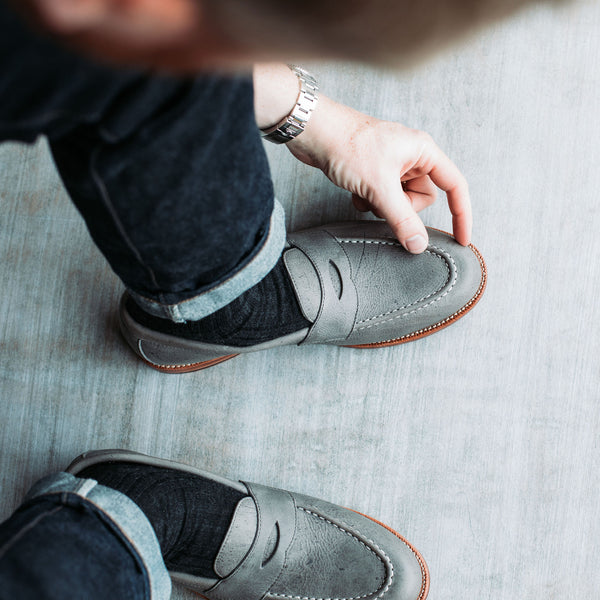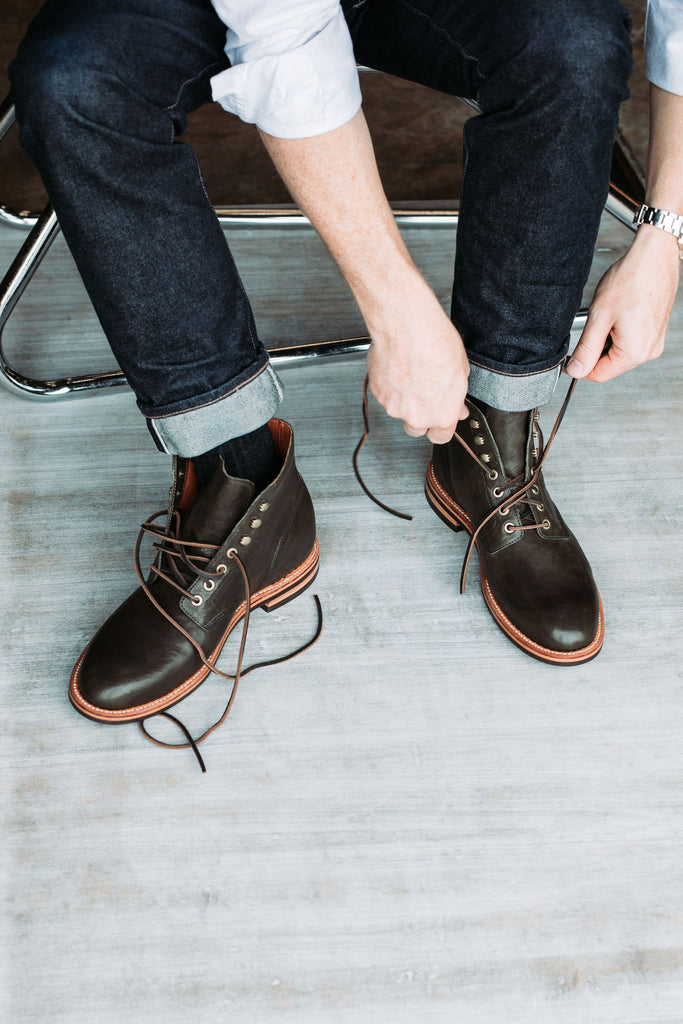One of our priorities is to help our customers find the size best suited for them. Of course, many variables affect sizing, but the proper selection can be straightforward when avoiding these five mistakes we encounter most often.
- Buying snug to “break in” the boot. This is a wildly popular take on how new GYW footwear should fit. This is uncomfortable from the first wear and depending on the season and time of the day, your foot can swell creating an even more miserable experience. Tight footwear restricts blood flow and leads to poor foot health. A new shoe should feel comfortable from the outset.
-
Focusing on the amount of room in front of the toes. Most people are used to wearing sneakers and try to compare the fit to their boots and shoes. Sneakers generally have a rounded toe shape, which allows the toes to sit closer to the front of the shoe. However, when the footwear has an almond shape, excess space in front of the toes should be expected. Prioritize having the ball of your foot in the widest part of the shoe. The 5th joint (small toe) needs to be sitting comfortably in the shoe, never pinched.

- Heel slip. Ah, the dreaded heel slip. It might be the most troublesome issue because customers will size down (too far) solely to avoid it. When a customer is in-between sizes, we encourage the larger of the two for one reason in particular: a tight-fitting Goodyear-welt shoe or boot will not improve with wear. It will shape to your foot with time, but the lack of overall volume will still cause discomfort on a summer day. Heel slip, however, can improve with wear. As the insole and outsole components are being flexed over time, the shoe begins to roll, working with your stride. The upper components, including the leather heel counter, also begin forming to your foot, thus improving the overall fit and minimizing that slippage.
-
Tight instep. While this fit issue may not be as obvious on a shoe or boot that laces, it’s worth paying attention to from the onset. (If you have ever worn a loafer with a tight instep, you understand the true meaning of discomfort.) When lacing your footwear, observe the instep area and notice the distance between the eye rows or simply unpleasant pressure on the top of your foot. When it feels like you're restricting blood flow in your foot, you probably are.

- Sticking to your size. As with clothing, it's easy to continue buying the same size each time before realizing it's not always working. We encourage customers to evaluate their current footwear and how they actually fit today. It's all too common when someone says they wear a 10 in a particular boot, but when we ask how it fits, they will catch themselves explaining how it feels too big or small. Even when clothing sizes may not change over a period of time, areas of the foot can change, requiring a different shoe size.
To sum it all up, our simple rule of thumb is to make sure your new shoe or boot offers enough room from the very first try on. If you have specific questions on fitting, please reach out to our team by phone or email for personalized suggestions.





